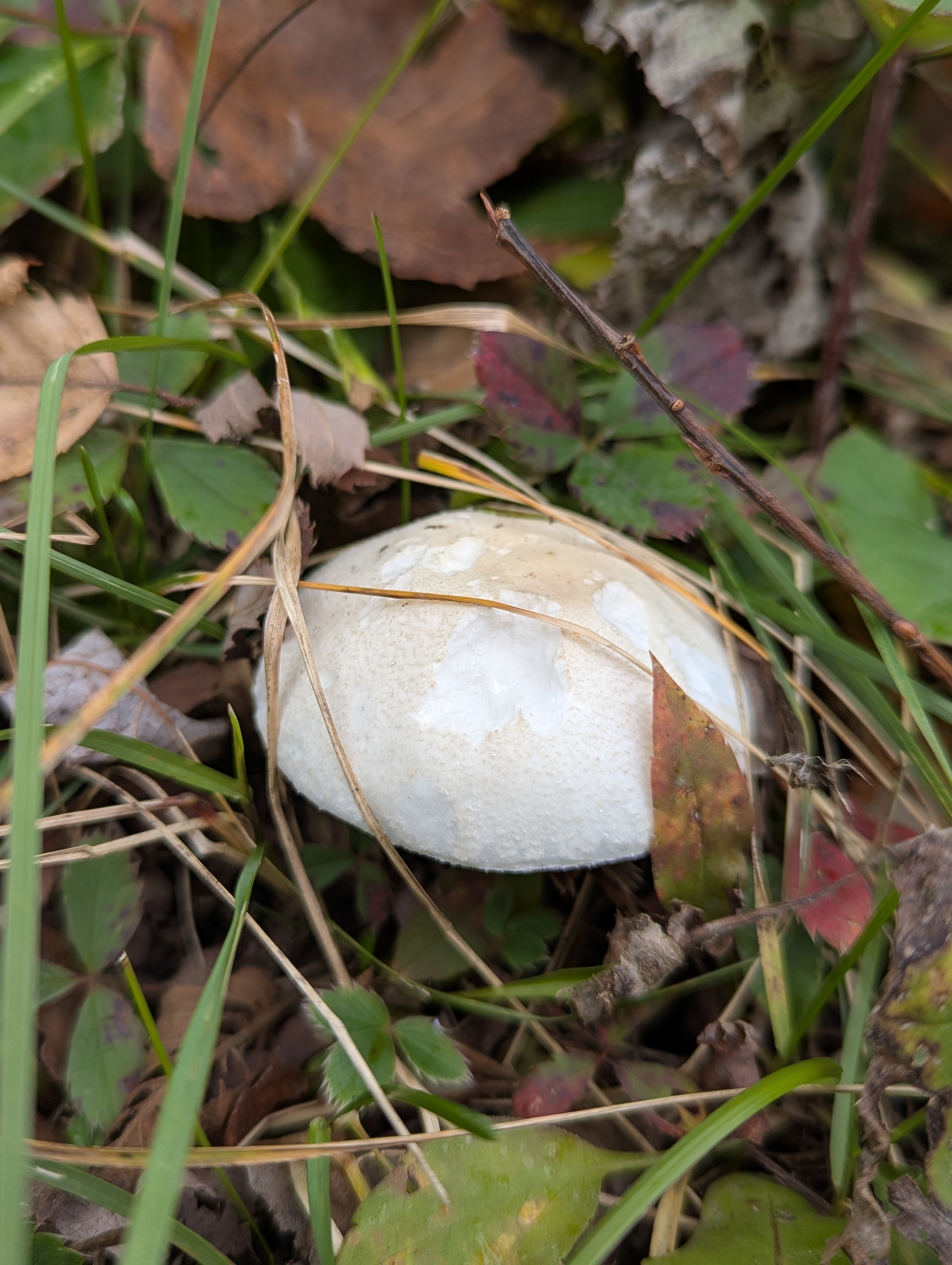Destroying Angel (Likely)
Amanita bisporigera
EXTREME DANGER: Potential Deadly Amanita Species

1 / 4
All Images (4)
Key Features
- Entirely white basidiocarp
- Cap surface smooth with scattered white veil remnants
- Gills white
- free
- and crowded
- Distinct
- membranous white annulus (ring) present on stipe
- Stipe base appears bulbous
- potential volva obscured by soil
Color:
Pure white to cream
Smell:
No distinctive smell (or slightly sweet/unpleasant, requires confirmation)
Growth Pattern:
Single
Environment:
Soil and leaf litter
Habitat & Distribution
Habitat:
Mixed woodland edge or grassy areas near trees
Distribution:
Widespread across North America (Eastern focus for A. bisporigera)
Seasonality:
Summer and Fall
Critical Features for Confirmation
- Volva (critical identification feature) is obscured by soil and debris
Economic Value
Market Demand:
None - toxic
Price Range:
N/A
Commercial Use:
None
Toxicity Information
Symptoms:
- Severe vomiting and bloody diarrhea (delayed onset)
- Acute liver failure
- Kidney failure
- Hypoglycemia
Onset Time:
6 to 24 hours post-ingestion
First Aid:
- Seek emergency medical treatment immediately (call 911)
- Do not wait for symptoms to appear
- Retain a sample of the mushroom for laboratory identification
Emergency Contacts:
- 911 (US)
- Poison Help (US): 1-800-222-1222
Similar Species
Death Cap
Amanita phalloides
Key Differences:
- Cap typically greenish, yellowish, or brownish, not pure white
- Volva usually more distinct and sac-like
The Vomiter
Chlorophyllum molybdites
Key Differences:
- Gills turn greenish with maturity
- Spore print is green (Amanita is white)
Recommended Action
Do not touch. Do not consume. Secure the area and prevent access by pets or children. Immediate destruction or careful removal for professional analysis is required.